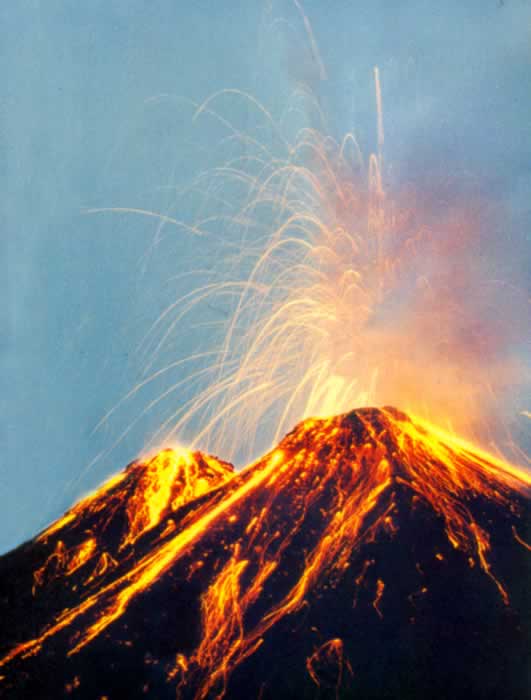 |
VOLCANOES |  |

 |
VOLCANOES |  |

The obvious component of a volcanic eruption is lava. If the lava is low in silica content and a smooth skin with some wrinkles form as the top lyyer begins to cool while the underneath layers continue to flow, this is called a pahoehoe (puh-hoy-hoy) flow. If the lava is rough with jagged edges, it is known as an aa (ah-ah) flow.
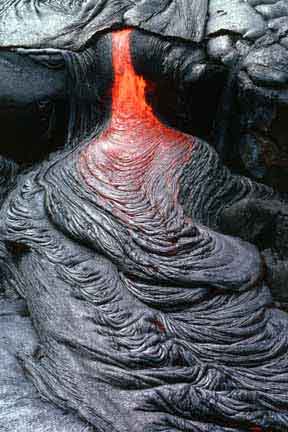
Pahoehoe Lava Flow
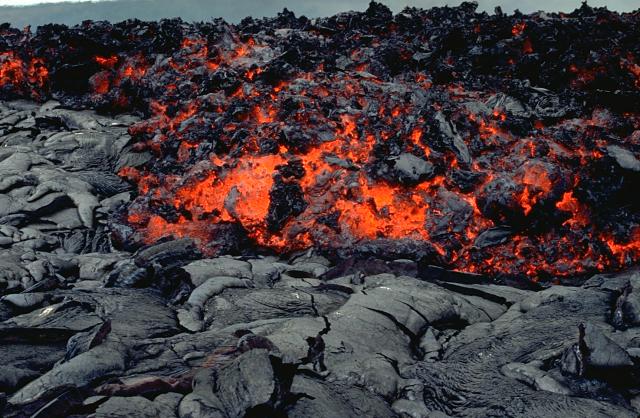
Aa Lava Flow
The second component of a volcanic eruption is dissolved gas. Estimates of gas content is approximately 1% to 6%. It is very difficult to test because of the dangers involved. The gases (water vapor, carbon dioxide, nitrogen, sulfur, chlorine, hydrogen, and argon) are released when the pressure on the magma decreases. If is believed that the gases from volcanoes are responsible for our atmospheric gases.
Finally, pyroclastic material are ejected during volcanic eruptions. Pyroclastic materials include any rock ejected out of a volcano, including bombs, blocks and ash. White hot ash and dust are produced as the gas moves through the volcano's vent. As the gas ascends, it expands creating a froth or foam. After an explosion, settled dust and ash particles fuse together to form a rock type called welded tuff.
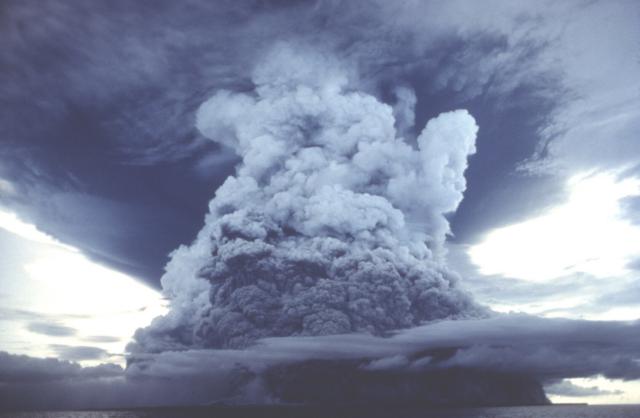
Pyroclastic cloud from Una Una

The Black Region is Welded Tuff
Classification is done by particle size

Lapilli
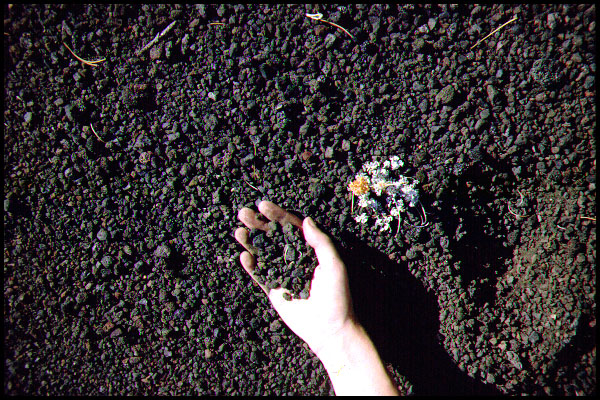
Cinders

Blocks

Bombs

Caldera without water
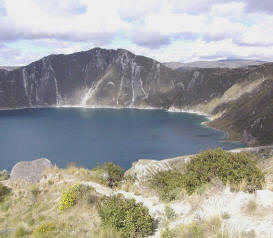
Caldera with water
Calderas are circular depressions over 1 km in diamter resulting from a collapse of a volcano's summit. If the caldera is less than 1 km wide it is called a collapse pit.
How Calderas Form
Fractures in the flanks of a volcano. These long narrow cracks are responsible for releasing large amounts of lava and increasing the distance it can cover.
These short structures connect a magma chamber to the surface.
These structures form as a result of magma hardening in a volcanic pipe and the surrounding rock is eroded away.
Back to Volcanoes Page 1 |
Volcanoes Page 3 |
Go To Volcanoes Assignments |